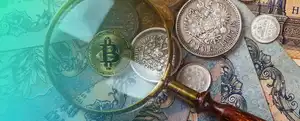How Did Money Develop in South Africa?

What is money?
Money is any commodity, including coins and paper notes that is widely accepted as a medium of economic exchange for goods and services by the general public.
What are the types of money?
Economists classify money into four types: commercial money, fiduciary money, fiat money, and commodity money.
How was money developed?
People used to barter for products and services before money was introduced. It wasn’t until about 5,000 years ago that the Mesopotamian people created the shekel, which is regarded the first known form of currency.
What are the functions of money?
1. A medium of exchange
2. A measure of value
3. A store of value
4. The basis of credit
5. A unit of account
6. A standard of postponed payment
What are the characteristics of money?
The following are the key characteristics of money:
1. Durability.
2. Portability.
3. Divisibility.
4. Uniformity and Fungibility.
5. Limited supply.
6. Acceptability.
How did money develop in South Africa?
The history of money in South Africa started when coins were first introduced in 1652 by the first European settlers the southern Africa, the Dutch, who landed on the shores of South Africa. The coins used was called the Dutch guilder, which was the official currency of the Netherlands. The Rixdollar, South Africa’s first paper money, was introduced in 1782. In 1806 the British acquired control of the region and introduced the British Pound Sterling. The British Pound Sterling was replaced with South African Rand on 14th of February 1961 after South Africa gained independence from British rule.
Why is South Africa’s money named rand?
The term Rand is derived from the word “Witwatersrand,” a range of hills that is the source of 40% of the world’s gold.
Where is money produced in South Africa?
The South African Bank Note Company prints the country’s paper money, and the South African Mint produces the country’s legal-tender coins.
Share This





